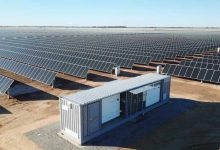Judith Sloan has never been a fan of renewable energy and policies that support them. No editorial writer for The Australian is expected to be.
Sloan has made repeated attacks on renewables and government policies, and usually gets it completely wrong, as we have noted on many occasions, including way back in 2015 in this piece Murdoch media wrong again on renewable energy target.
On the weekend, Sloan had another crack at renewables in a piece entitled “Victoria’s nonsensical renewable energy experiment”. It shows she is still very badly advised, and still very, very wrong.
There are a couple of stand-out claims from Sloan that are so hopelessly wrong they would not have been published if there had been even 30 seconds spent on fact checking. One suspects, like most trenchant renewable energy critics, Sloan is relying on 10-year-old data, or perhaps data from another country with different resources.
“Wind farms produce at most 30 per cent of their capacity, mainly in spring and autumn.”
Wrong. For “at most” the figure for wind farms will be more like 50 per cent of their capacity than 30 per cent, and most new wind farms are producing at well over 40 per cent. They actually produce 50 per cent more than what Sloan tells her readers. Very few wind farms in Australia produce at less than 30 per cent. The average for Australia is 36 per cent.
“Solar farms produce slightly less than 20 per cent, with peak output at 1pm, a time of relatively low demand”
Wrong again. Solar farms produce far more than that, and have done so for years. Now, with the introduction of tracking systems, and more efficient panels and bi-facial modules, they are producing at capacity factors of more than 30 per cent.
Again, this is 50 per cent more than Sloan tells her readers. The business models of at least two of the three solar farms that won support from the Victoria government are based on capacity factors of 31 per cent. And remember, this is in Victoria, hardly the state with the best solar resources.
“The cost of connecting (a renewable energy project) is borne by all customers without any cost imposition on the operator”
Another hopelessly wrong claim. The biggest project included in the latest Victoria auction, the 336MW Dundonnel wind farm, will pay for the connection of a new 45km line to connect to the main transmission line. All other wind and solar projects face similar costs.
The biggest beneficiaries of publicly funded connections to big generators have been the legacy coal and gas plants.
“But let’s be clear: reverse auctions involve huge subsidies to the promoters of these projects, guaranteeing cashflow at high megawatt-hour prices.”
The wind and solar projects are guaranteed to receive a tariff of around $56/MWh (slightly less for some solar projects). This compares to the current wholesale price of $90/MWh.
If the market price stays above the price guarantee, the wind and solar farms do not collect the extra money. It goes back to the government – a similar system that has benefited the ACT government. Only if the prices go below $56/MWh does the government make good the difference.
Sloan also complains that the wind and solar farm allocations do not take into account “firming” obligations to ensure 24/7 supply of electricity.
“We need to add a minimum of $40/MWh for firming. This makes these projects very expensive,” she says.
We don’t need to add the cost of firming any more than we need to add the cost of “peaking” power stations to the price of coal generation – think of all the gas, diesel and hydro stations built as back-up to coal generators and to respond when the coal generators could not.
Each form of generation has its own role to play. Solar and storage come in well below their direct competitors – gas and diesel peaking generators – and according to Snowy Hydro, AGL and Simec Zen Energy’s Sanjeev Gupta come in below new coal generation too.
Sloan really needs to do more research. Victoria is a long way short of needing back-up by extra firming capacity to support its renewables – it already has significant back-up in place to support its ageing fleet of coal-fired generators.
Remember, the work of the CSIRO and networks lobby, along with that of the Alan Finkel-led report into storage, highlighted that new storage was not critical until the penetration of renewables rose above 40 per cent.
In the event, Victoria is investing in storage. It has two battery plants that will be open in the next month or so – one at the Ganawarra solar farm and the other at a Ballarat network centre, with another being built at the Bulgana wind farm near Stawall, and more in the pipeline.
As well, numerous other projects are trialling battery storage at a smaller scale, micro-grids, energy sharing schemes and demand management.
Readers may be interested in listening to the latest episode of the Energy Insiders podcast, where the Energy Tranisition Hub’s Simon Holmes à Court shares his stories about his attempts to correct the renewable naysayers.



